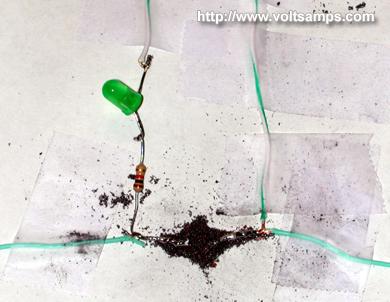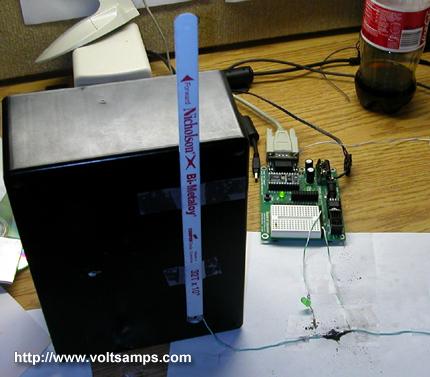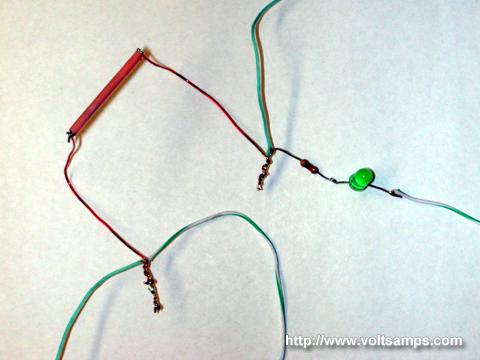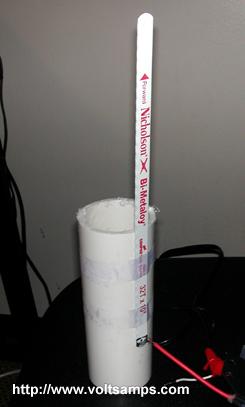 .:: RF Coherer ::. .:: RF Coherer ::.
|
Introduction:
Back in the early days of radio receiver development a new component was invented which gave way to impressive radio reception at the time. The device was named a coherer and consisted of a tube filled with iron shavings with two electrodes at either end. The device works by receiving RF from one side into the other which was grounded. The RF would cause slight arcing between the iron (or nickel) shavings which would make a conductive path between both sides of the coherer. Since the conductive path lingered after the RF input was over the device had to be "tapped" rapidly to break up the conductive path. My goal is to reconstruct this vintage device and test its effectiveness and sensitivity.
Materials:
- Low Power 7kV DC Power Supply
- Scrap Wire
- Iron Powder
- LED
- 300 Ohm Resistor
- 5V Power Supply
Data:

This is a diagram of the transmitter and receiver. Notice how the coherer acts like a latching transistor amplifier.

Initially I made a very crude prototype of the coherer by making a small pile of iron powder with two tinned wires dipped in.

This is the entire receiver setup. I used a saw blade as a quick and rugged antenna. I then connected the antenna to one side of the coherer as is show in the diagram.

After the prototype test I was very pleased with the stunning performance and decided to make an enclosed "clean" version of the coherer by using a thin straw as the enclosure.

The transmitter consisted of a saw blade with PVC piping as a base. A 7kVDC HV source was connected to the antenna and was set to discharge from the antenna to ground.
Conclusion:
Despite the crude method of RF reception the coherer is an amazing component. I was able to switch on an LED to full brightness from complete darkness from a distance of about 10ft. Piezo-electric grill starters work well for exciting the antenna. I was also amazed to see that small static discharges from my finger into the transmitter antenna was also enough to trigger the receiver from about 2ft. For continuous reception a vibrating motor can be placed on the coherer to constantly break up conductivity. My setup was not optimized at all which made the highly successful results even more amazing. This amplifier component is not well suited for audio reception but would work great for most other RF application even lightning detection.
|
 |
|



